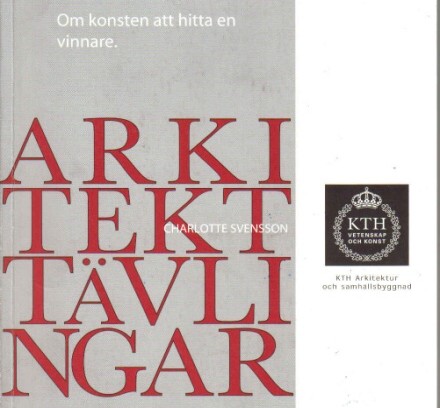Architectural quality in competitions. A dialogue based assessment of design proposals
DOI:
https://doi.org/10.7577/formakademisk.130Keywords:
architectural competition, quality assessment, architectural quality, design criteriaAbstract
This article is the outcome of a comprehensive study of architectural competitions in the Nordic countries (1999-2000). The vital content of the research is derived from a series of meticulously conducted interviews with key actors including 18 highly qualified and experienced experts from the jury members representing clients, architectural associations and competitors. The study refers to quality as a key-concept and a main source of conceiving, judging and selecting a prize winner. It is possible to articulate how architectural quality issues are met by jury members; how they are being communicated; and how a winner is nominated. The study provides insight into how the concept of quality in architectural design is understood in practice. Quality is identified through design criteria in a dialogue-based assessment of architecture and urban design projects. The assumption is that the judgment and evaluation of entries in competitions are strongly connected to the leading values, norms, regulations, organizations and traditions in Scandinavia. When quality is contextually bound, the assessment becomes a question of how the solutions fit the specific plot. These issues in a competition process cause uncertainties and discrepancies in judging and selection. However, while the main role of jury members is to agree upon the most appropriate solutions, they finally succeed in designating the best entry through their cumulated tacit knowledge and well-trained eyes. Competence and consensus are therefore two essential factors that make jury members feel confident in their final choice of a winner.

Downloads
Published
How to Cite
Issue
Section
License
Authors who publish with this journal agree to the following terms:
- Authors retain copyright and grant the journal right of first publication with the work simultaneously licensed under a Creative Commons Attribution 4.0 License that allows others to share the work with an acknowledgement of the work's authorship and initial publication in this journal.
- Authors are able to enter into separate, additional contractual arrangements for the non-exclusive distribution of the journal's published version of the work (e.g., post it to an institutional repository or publish it in a book), with an acknowledgement of its initial publication in this journal.
- Authors are permitted and encouraged to post their work online (e.g., in institutional repositories or on their website) prior to and during the submission process, as it can lead to productive exchanges, as well as earlier and greater citation of published work (See The Effect of Open Access).
- The author(s) must manage their economic reproduction rights to any third party.
- The journal makes no financial or other compensation for submissions, unless a separate agreement regarding this matter has been made with the author(s).
- The journal is obliged to archive the manuscript (including metadata) in its originally published digital form for at least a suitable amount of time in which the manuscript can be accessed via a long-term archive for digital material, such as in the Norwegian universities’ institutional archives within the framework of the NORA partnership.
The material will be published OpenAccess with a Creative Commons 4.0 License which allows anyone to read, share and adapt the content, even commercially under the licence terms:
This work needs to be appropriately attributed/credited, a link must be provided to the CC-BY 4.0 licence, and changes made need to be indicated in a reasonable manner, but not in any way that suggests that the licensor endorses you or your use.



